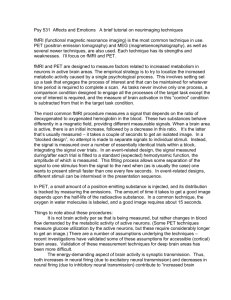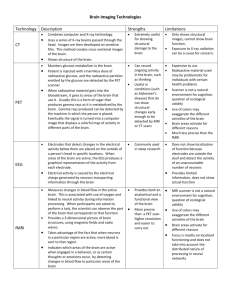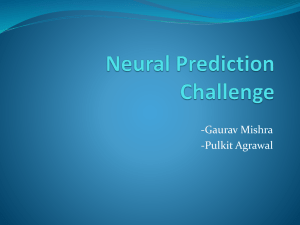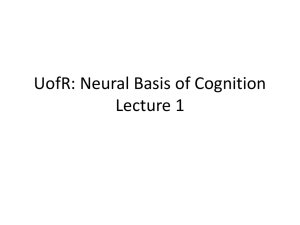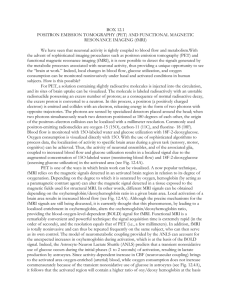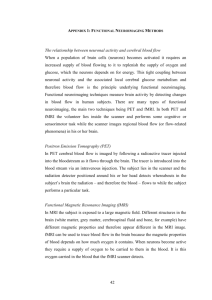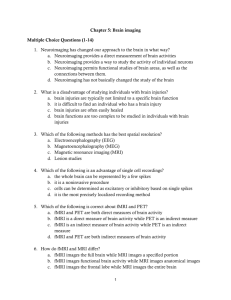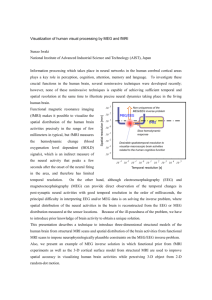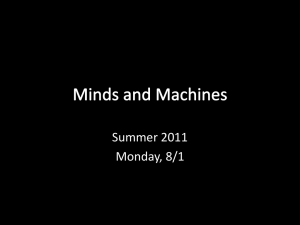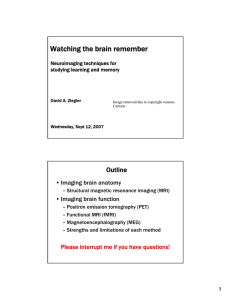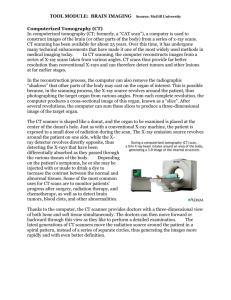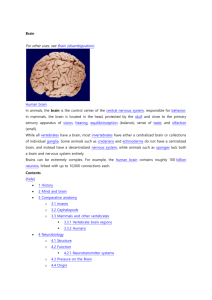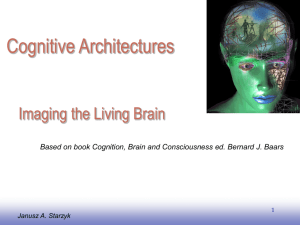LESSON 1: Techniques to learn about the Brain and Neural
advertisement
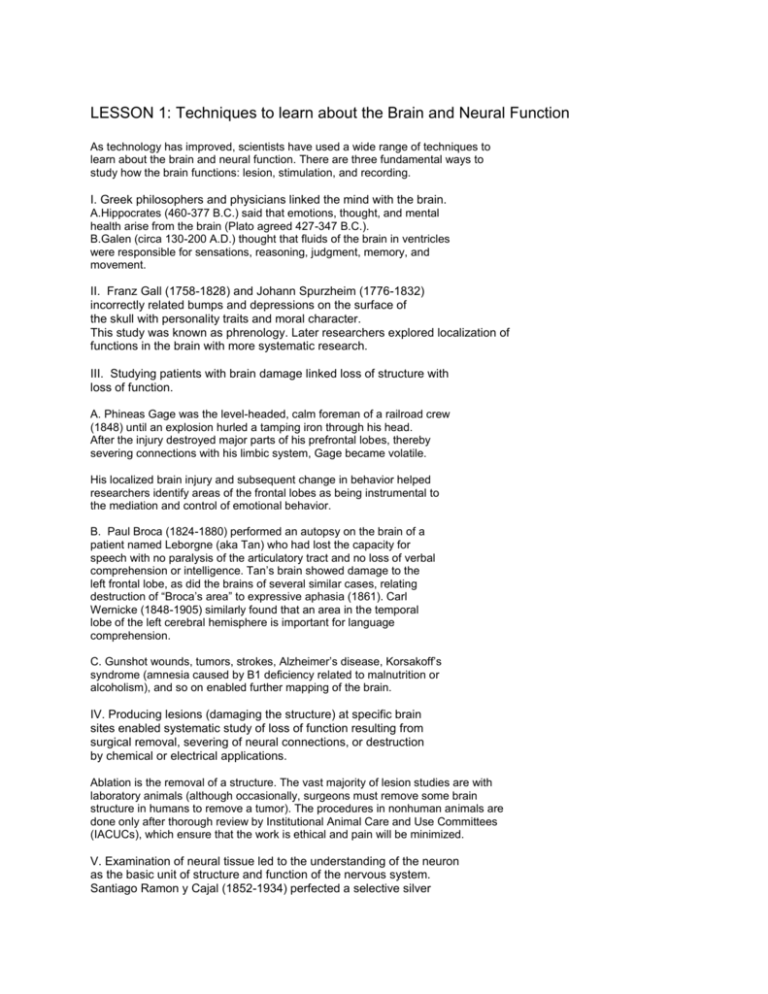
LESSON 1: Techniques to learn about the Brain and Neural Function As technology has improved, scientists have used a wide range of techniques to learn about the brain and neural function. There are three fundamental ways to study how the brain functions: lesion, stimulation, and recording. I. Greek philosophers and physicians linked the mind with the brain. A.Hippocrates (460-377 B.C.) said that emotions, thought, and mental health arise from the brain (Plato agreed 427-347 B.C.). B.Galen (circa 130-200 A.D.) thought that fluids of the brain in ventricles were responsible for sensations, reasoning, judgment, memory, and movement. II. Franz Gall (1758-1828) and Johann Spurzheim (1776-1832) incorrectly related bumps and depressions on the surface of the skull with personality traits and moral character. This study was known as phrenology. Later researchers explored localization of functions in the brain with more systematic research. III. Studying patients with brain damage linked loss of structure with loss of function. A. Phineas Gage was the level-headed, calm foreman of a railroad crew (1848) until an explosion hurled a tamping iron through his head. After the injury destroyed major parts of his prefrontal lobes, thereby severing connections with his limbic system, Gage became volatile. His localized brain injury and subsequent change in behavior helped researchers identify areas of the frontal lobes as being instrumental to the mediation and control of emotional behavior. B. Paul Broca (1824-1880) performed an autopsy on the brain of a patient named Leborgne (aka Tan) who had lost the capacity for speech with no paralysis of the articulatory tract and no loss of verbal comprehension or intelligence. Tan’s brain showed damage to the left frontal lobe, as did the brains of several similar cases, relating destruction of “Broca’s area” to expressive aphasia (1861). Carl Wernicke (1848-1905) similarly found that an area in the temporal lobe of the left cerebral hemisphere is important for language comprehension. C. Gunshot wounds, tumors, strokes, Alzheimer’s disease, Korsakoff’s syndrome (amnesia caused by B1 deficiency related to malnutrition or alcoholism), and so on enabled further mapping of the brain. IV. Producing lesions (damaging the structure) at specific brain sites enabled systematic study of loss of function resulting from surgical removal, severing of neural connections, or destruction by chemical or electrical applications. Ablation is the removal of a structure. The vast majority of lesion studies are with laboratory animals (although occasionally, surgeons must remove some brain structure in humans to remove a tumor). The procedures in nonhuman animals are done only after thorough review by Institutional Animal Care and Use Committees (IACUCs), which ensure that the work is ethical and pain will be minimized. V. Examination of neural tissue led to the understanding of the neuron as the basic unit of structure and function of the nervous system. Santiago Ramon y Cajal (1852-1934) perfected a selective silver staining technique developed by Camillo Golgi (1843-1926) to examine single neurons. Cajal described the structure of a neuron and noted that each cell was distinct from the next instead of merging into it. VI. Direct electrical stimulation of the brain provides another way to test the functions of certain brain areas. A. Wilder Penfield (1952) used an electrode to localize the origin of seizures in patients. Stimulating different cortical areas, such as the back of the frontal cortex, at particular sites caused movement for different body parts, enabling mapping of the motor cortex. His localized brain injury and subsequent change in behavior helped researchers identify areas of the frontal lobes as being instrumental to the mediation and control of emotional behavior. B. Walter Hess (1955) inserted electrodes more deeply into the brain of nonhuman animals that were under anesthesia. After they recovered from the surgery, he related start/stop functions with specific brain structures. Examples are the “start eating and stop eating” functions associated with areas of the hypothalamus. VII. An EEG (electroencephalogram) is an amplified tracing of the activity of a region of the brain produced when electrodes positioned in direct contact with the scalp transmit signals about the brain’s electrical activity (“brain waves”) to an electroencephalograph machine. The amplified tracings are referred to as evoked potentials when the recorded change in voltage is the result of a response to a specific stimulus presented to the subject. EEGs have been used to study the brain during various states of arousal (such as sleeping and dreaming), detect abnormalities (such as deafness and visual disorders in infants or epilepsy), and study cognition. VIII. Imaging techniques in widespread use provide images of brain anatomy. A.CAT scan (also called CT)—computerized axial tomography A CAT scan creates a computerized image of X-rays passed through various angles of the brain showing two-dimensional “slices” that can be arranged to show the extent of a lesion. The procedure may involve injection of a contrast dye and involves shorter periods of scanning than MRI. Because it does not use magnets, it can be used with patients who have pacemakers or metallic implants. B. MRI—magnetic resonance imaging The giant circular magnet in the MRI machine causes the hydrogen nuclei in the water of cells to orient in a single direction. Pulses of radio waves cause the atoms to spin at a frequency and in a direction dependent on the type of tissue. The computer constructs images based on these signals. . MRI images are more detailed than CAT or PET scans and can be produced for any plane of view. IX. Some imaging techniques in widespread use have enabled neuroscientists to observe the activity of the brain as it functions. A. fMRI—functional magnetic resonance imaging . fMRIs capitalize on the ability of MRI scanners to detect a change in oxygen that occurs in an area of heightened neuronal activity. Heightened activity causes the brain to use more oxygen. Therefore, hemoglobin in that area has less oxygen bound to it. Hemoglobin with oxygen reacts to a magnetic field in a different way from hemoglobin not bound to oxygen. . fMRI is generally considered preferable to PET because fMRI does not expose the brain to radioactivity. Powerful magnetic fields can pose a mild risk, too, especially if repeated rapidly, but they are less dangerous than radioactivity. B. PET scans—positron emission tomography . When neurons are active, an automatic increase in blood flow to the active region of the brain brings more oxygen and glucose necessary for respiration. Blood flow changes are used to create brain images when tracers (such as radioactively labeled glucose) injected into the blood of the subject emit particles called positrons, which are converted into signals detected by the PET scanner (or more specifically, the positrons almost immediately are destroyed and produce pairs of gamma particles, and the gamma radiation is detected by the scanner). Glucose concentrates in the areas of greatest activity, and the concentration of labeled substances taken up by brain tissue (revealed in colored computer graphics) depends on the amount of metabolic activity in the imaged brain region. This technique tracks complex series of interactions in different brain areas associated with specific mental processes. PET scans expose the subject to radioactivity (a low amount), so their use is limited. X. Other advances in technology have enabled neuroscientists to learn more about the relationship of neurological function to behavior. A. BEAM—brain electrical activity mapping This feeds EEG information from numerous recording sites into a computer that constructs an image of the brain showing areas with different gradations of voltage in different colors or shades so that more accurate diagnoses of brain tumors, epilepsy, and learning disorders can be made. B. MEG—magnetoencephalography and SQUID—superconducting quantum interference device Based on the fact that whenever an electrical current is present there is an accompanying magnetic field, MEG detects neural activity too brief to be detected by PET or fMRI. This technique has been used to locate seizure-producing regions in epileptic patients. It’s similar to EEG. MEG measurements use a SQUID, an extremely sensitive device, which detects magnetic fields. C. PRONG—parallel recording of neural groups Electrodes that can measure many individual neurons in close proximity have uncovered information about communication among neurons in a region. D. SPECT—single-photon emission computerized tomography This tracks cerebral blood flow as an indicator of neural activity in specific brain regions during performance of various tasks. SPECT is faster but has lower resolution than PET. E. TMS—transcranial magnetic stimulation The coils of wire around the head let scientists either depress or enhance activity in one area of the brain. This allows them to learn more about the different brain functions. F. Gene knock-out technology Breakthroughs in genetics have allowed scientists to remove specific genes from mice (and some other organisms) to help them understand the link between genes and behavior. For example, mice that are lacking one of the genes responsible for regulating the neurotransmitter dopamine act as if they are permanently high on cocaine. G. Optogenetics allows neuroscientists to insert genes into neurons of nonhuman animals that cause the neurons to become sensitive to (and be excited by) light. Shining light on that part of the brain will then activate those neurons. This allows specific activation of only the modified neurons, allowing their functions to be better understood.

